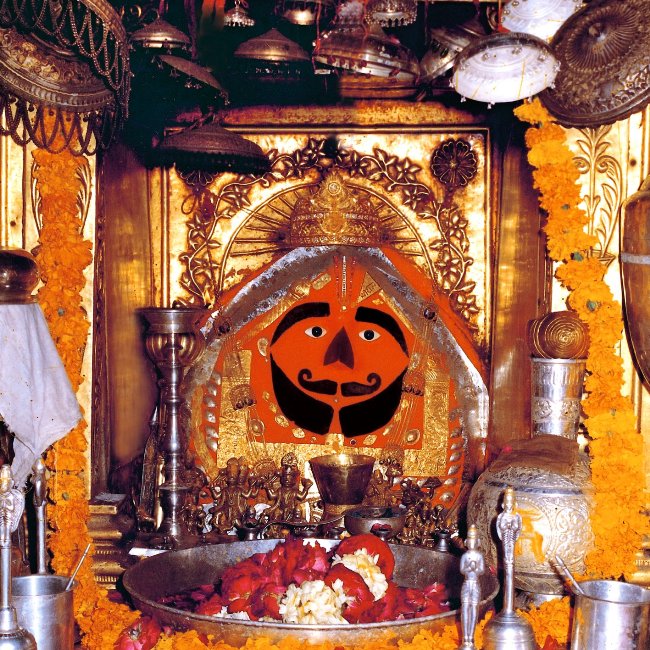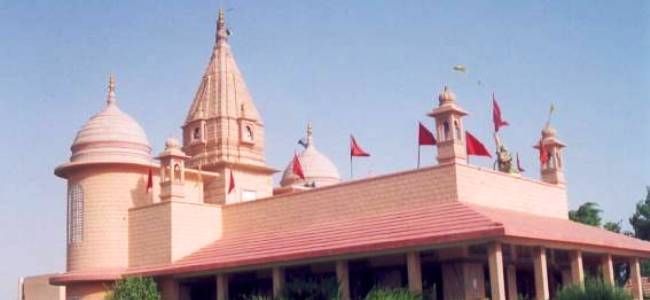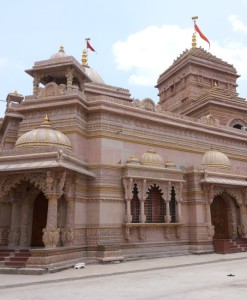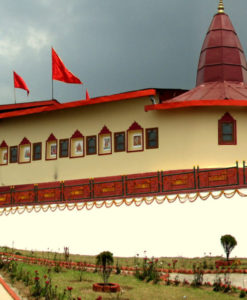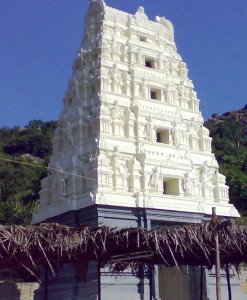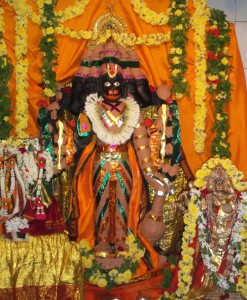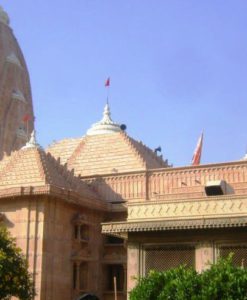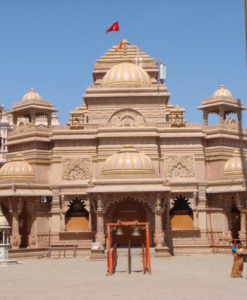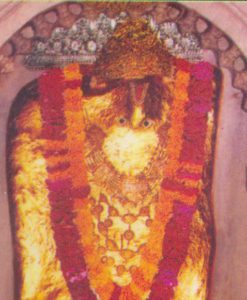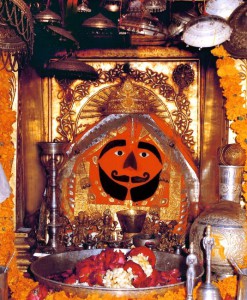No products in the cart.
Recognized as an entry gate to the great Thar Desert, Churu is located in the deserted area of Rajasthan.Churu, the desert city, is a place of historic importance. The town is said to have been found by a Jat named Chuhru in 1620 AD. Churu, like an oasis, situated in the middle of the shifting golden sand dunes, opens the gate to the great desert of Thar. Administratively, it is the headquarter of the district.
Salasar Balaji Temple, Churu, Rajasthan
Shri Salasar Balaji Temple in Salarasar, Rajasthan is a Shri Hanuman Ji Temple. This is the place where Lord Hanumanji is worshipped in a different form or idol than the regular form we know. At this place, Hanuman ji or Balaji is a prayed in a Human Face Idol. This is a place proven for the past centuries to have been fulfilling the wishes of millions of pilgrimage from around different parts of Rajasthan and Western India and Eastern Pakistan (Formerly India)
The idol of Balaji here is different from all other idols of Lord Hanuman. Hanuman possesses round face with moustache and beard making it the most unique idol among the other idols of Hanuman all over the world.
About five centuries back the present Salasar area was inhabited by Gandas gotra Jats and known as ‘Gandas ki Dhani’. At one time there became a severe scarcity of drinking water due to famines in the area. A saint came to the village at that time and on the request of villagers pointed out a spot to dig a well suitable for drinking water. At the same time he warned that the person who would dig the well would meet death. The villagers thought it better to leave the place and the Gandas people moved away.
Later on the area was occupied by Tetarwal Gotra Jats and named the village Tetarwal ki Dhani. They dug a well which is still used as source of water and called ‘ganwai-kuan’. About three centuries back Shekhawat thakurs came from village Rewasaand started living in village Purnpura which was earlier known as Gugrana. Gugrana thakur Banwaridas came to villageNaurangsar in Churu district and started living there. His eldest son thakur Salam Singh occupied this area and changed the place name from Tetarwal ki Dhani to Salamsar which became Salasar over a period of time.
The idol is said to be retrieved by a Jat farmer from one of the villages of Rajasthan called Ambota. The idol was found by that Jat farmer in his farm and then forwarded by the Thakur of Asota to Pandit Mohandas Maharaj in Salasar.
It is a faith here that getting happy with the great bhakti of Shri Mohandas Ji Maharaj, Shri Ram Bhakt Hanuman appeared in the form of this great idol of Shri Balaji from the earth in the village Asota in the year Samwat 1811(1754 AD) Vikrami Shrawan Shukla Navmi Shanivaar. There after constructing the temple of Shri Balaji in the year Samwat 1815 with the help of his disciple Shri Uday Ram and his relatives. After giving them the responsibilities of this temple he took Jeevit Samadhi.
The Shri Salasar Balaji Temple was constructed on the 9th day of Shraavana in the samvat 1811 (1754 AD). Inspired by the strange dream and the unusual appearance of Balaji in the dream, the founder of the temple Mohandas Maharaj, got constructed a mud-stone temple initially with the help of Muslim craftsmen Noora and Dau of Fatehpur Shekhawati.
The Shri Salasar Balaji Temple was constructed over a period of about 2 years while using bricks, stones, cement, lime mortar, and marble. While white marble stone has been extensively used throughout the construction of the temple, the entire circulatory path, the Sabha Mandap (prayer hall) and the Sanctum Sanctorum is covered with artistic works of Gold and Silver. The vestibule, the doors and the utensils used in worshiping are made of silver. The main gate is made up of carving works of white marble. The temple shrine and the sanctum sanctorum are decorated with floral patterns and other kinds of mosaic works done in Gold and Silver to give the temple a rich look. The idols placed were built of a high quality sculpture.
The Shri Salasar Balaji Temple is open to devotees from early morning 4:00 AM till 10:00 PM in the night. However, the temple is not closed at all on some special occasions such as Hanuman Jayanti, as the number of pilgrims visiting the place reaches millions on one single day.
Some of the regular activities of the temple include:
- Regular worships of the deity
- Performing Aartion fixed time slots
- Feasting of Brahmins and other mendicants
- Recitation of Ramayan
- Recitation of Kirtan& Bhajans
- Arrangement for Savamanis
- Recitation of Sundar Kandon every Tuesday in union by the singers.
- Arrangement of stay for the visitors
Sri Hanuman Jayanti festivals are celebrated on Chaitra Shukla Chaturdashi and Purnima. Lacs of devotees arrive here on Sri Hanuman Jayanti from every corner of the country. Fairs are organized on Ashvin Shukla Chaturdashi and Purnima. Lacs of devotees use to come in these fairs too. Fairs on Bhadrapad Shukla Chaturdashi and Purnima are also as attractive as the rest of the fairs. Free food, sweets and drinks are distributed on these fairs.
Salasar town is in district Churu of Rajasthan. It is situated on Jaipur and Bikaner Highway. It is 57 kilometres from Sikar town, 24 kilometers from Sujangarh town and 30 kilometers from Laxmangarh. Salasar town lies in Sujangarh Panchayat Samity and is well connected with Delhi, Jaipur and Bikaner by regular bus service.
Indian Airlines and Jet Air fly to Jaipur, from where Salasar is 3.5 hours’ drive in Taxi or Bus. Sujangarh, Sikar, Didwana, Jaipur and Ratangarh are the nearest railheads for Salasar Balaji.
This city is about 170 KM from the city of Pilani. The road from Delhi to Pilani is very good. One must take a route via Rewari, Narnaul, Shinghana, Chidawa, Pilani. For Salasar, there is a direct road from Shinghana and one may not necessary go to Chidawa.

